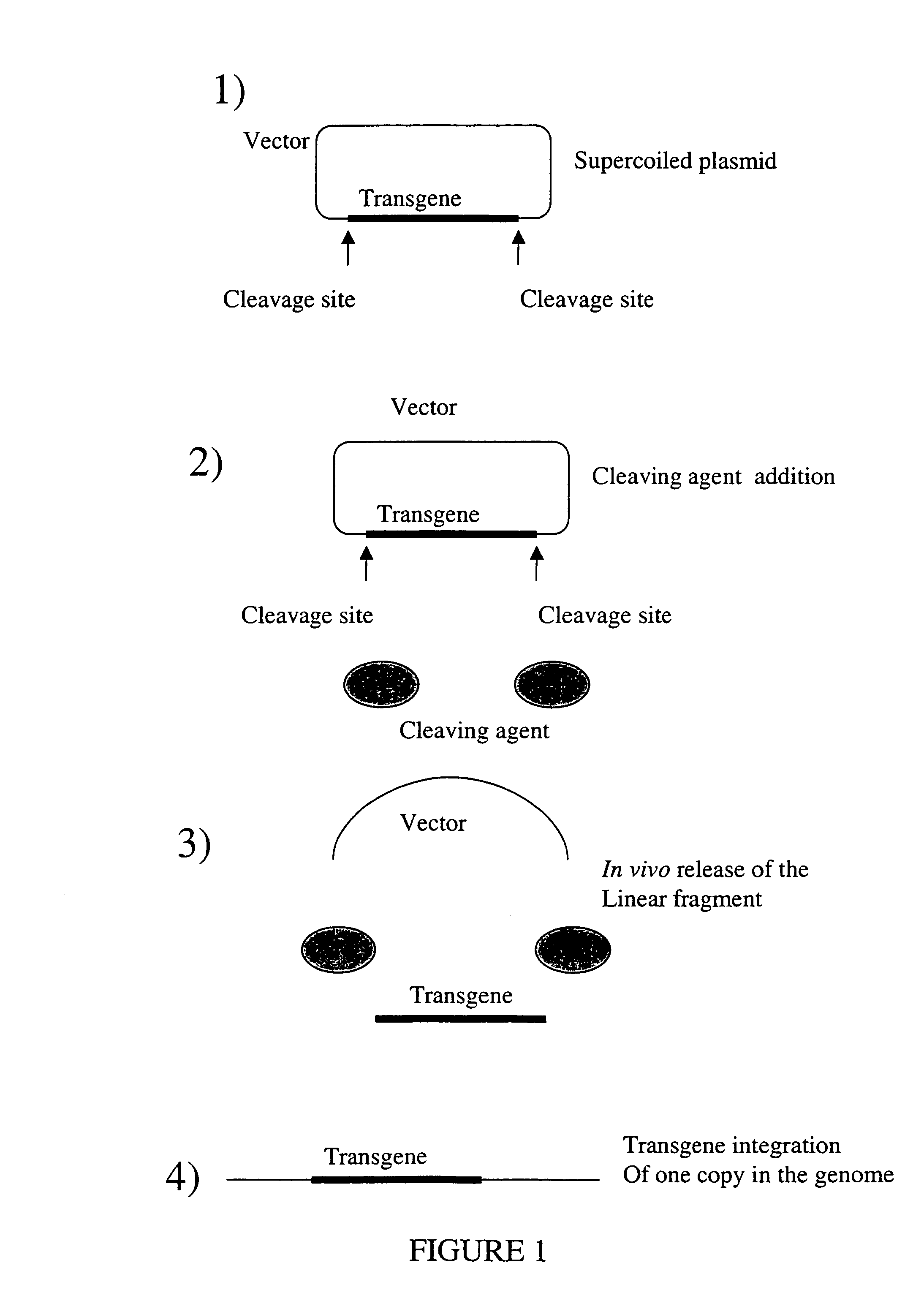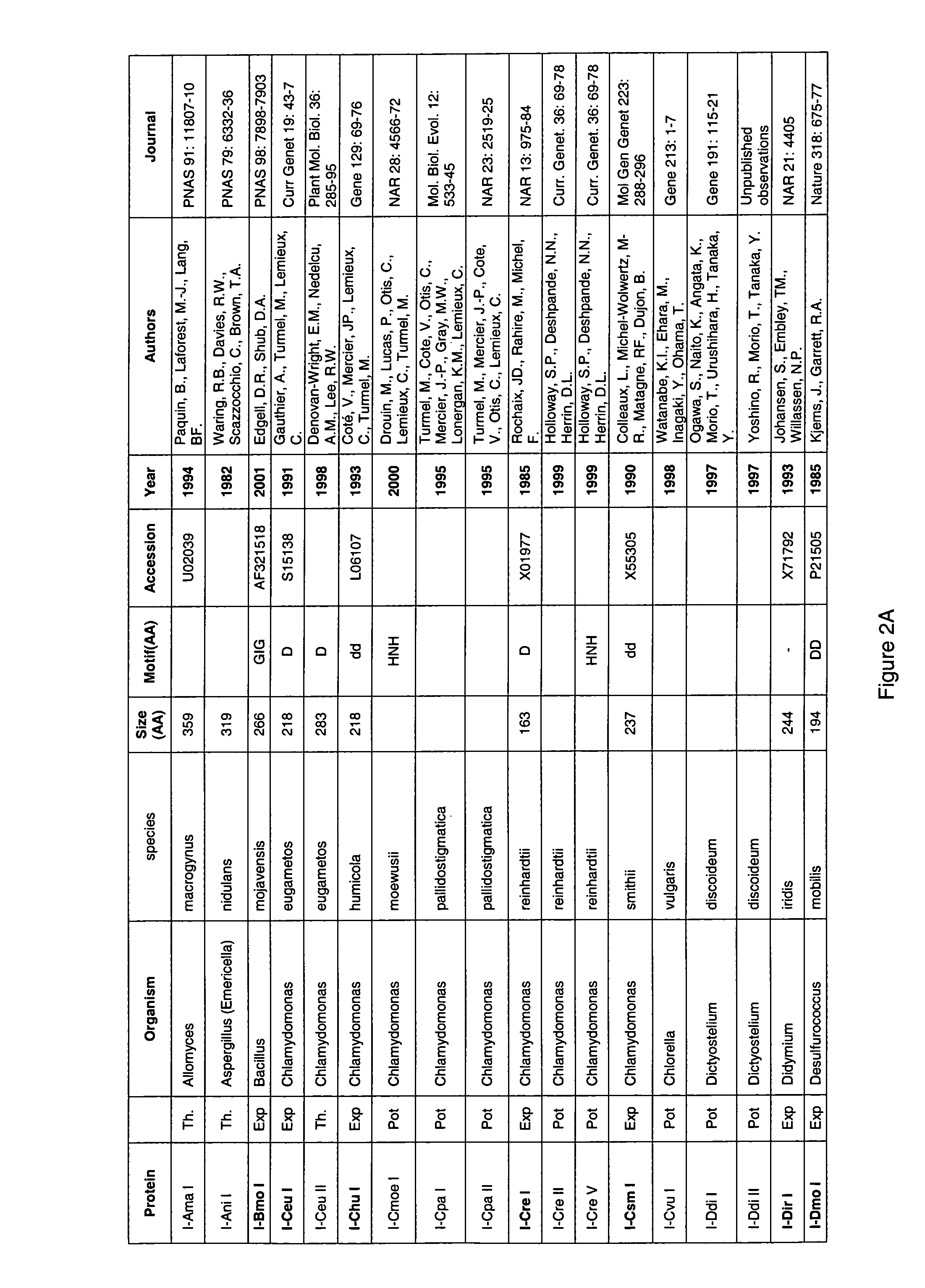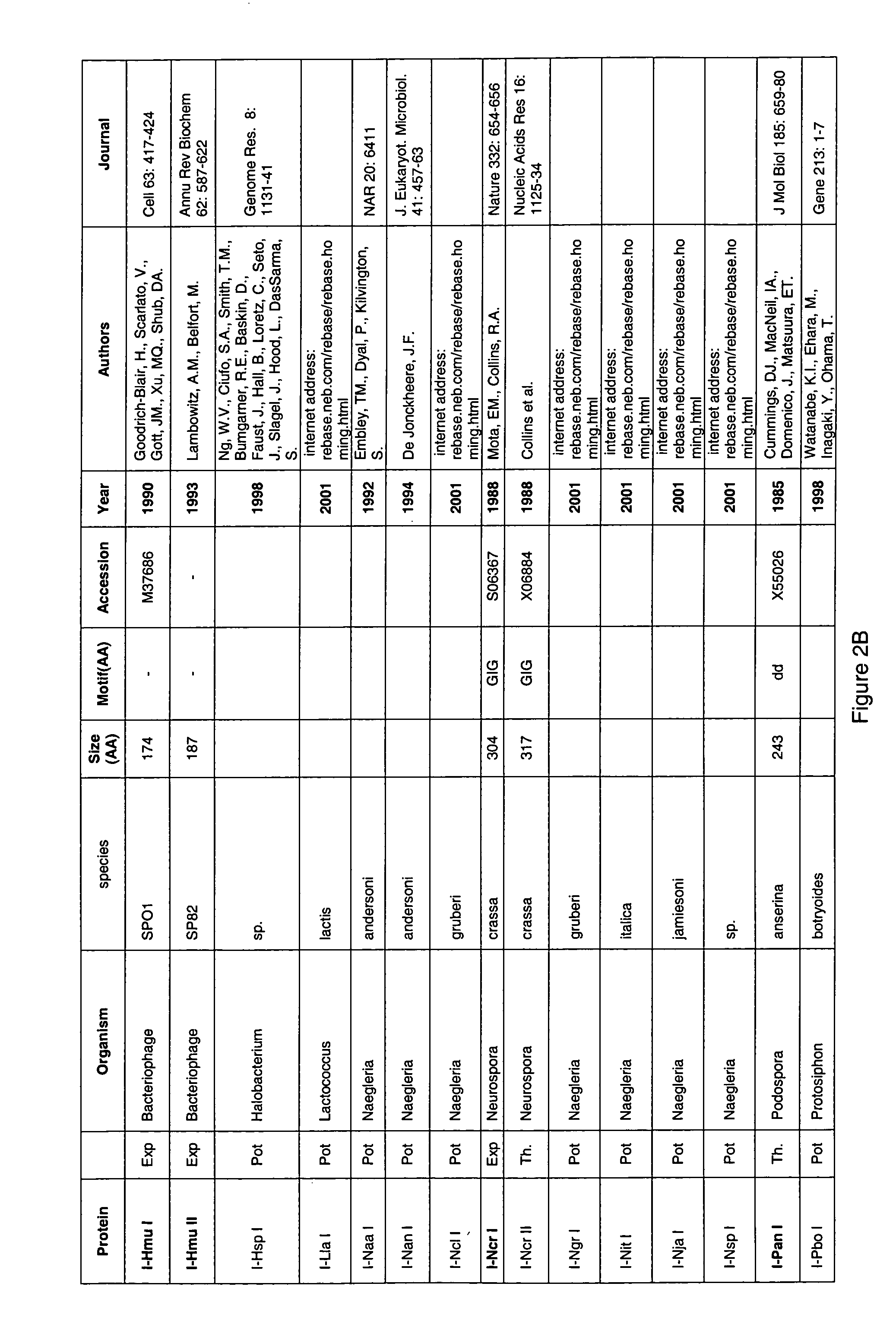Random integration of a polynucleotide by in vivo linearization
- Summary
- Abstract
- Description
- Claims
- Application Information
AI Technical Summary
Benefits of technology
Problems solved by technology
Method used
Image
Examples
example 1
Method of in Vivo Linearization in Human Cells
[0257](See FIGS. 4 and 5)
[0258]Construction of pVirtkU3R□geo (see FIG. 4)
[0259]pU3R plasmid was obtained by the insertion in pBS KS+plasmid (Stratagene, #X52328) of the 990 bp fragment from the segment 7840–8330 of the murine leukemia Moloney virus (MoMULV) comprising the U3 sequence from the 3′ Invert Repeat sequence following by the R sequence. The U3R fragment comprised the enhancer and promoter sequences of MoMULV and the polyadenylation signal AATAAA contained in the R sequence. The pVirU3R plasmid was obtained in two steps. Firstly, the sequence 5′-ATTACCCTGTTATCCCTAATGAAAGA-3′ (SEQ ID NO:1) comprising the recognition and cleavage site of the I-Sce I endonuclease followed by the Invert Repeat of MoMULV virus was inserted upstream of the U3R sequence of the pU3R plasmid. This I-Sce I endonuclease site is called in this example “5′ I-Sce I endonuclease site”. Secondly, the sequence 5′-TAGGGATAACAGGGTAATTTACTTTCA-3′ (SEQ ID NO:2) comp...
example 2
Method of In Vivo Linearization in COS Cells
[0279]Construction of ppSV40NeoIRESegfp Plasmids
[0280]The ppSV40NeoIRESegfp intermediate plasmid was obtained in two steps. First, the cassette containing the Simian virus 40 promoter (pSV40) and the neo resistance gene encoding the neomycin phopshotransferase was excised from the pcDNA3.1+ plasmid (Clonetech, Palo Alto, Calif., USA) and cloned in the pIRES2-EGFP plasmid (Clonetech, Palo Alto, Calif., USA) at the SmaI site, resulting in the insertion of the pSV40-Neo cassette upstream of the IRES bicistronic element and EGFP gene. Second, the PyTknlslacz cassette from the pPytknlslacz plasmid (Henry et al., C. R. Acad. Sci. III, 322(12): 1061–1070 (1999)) was excised and replaced by the entire pSV40-Neo-IRES-EGFP (ppSNIE) cassette and was inserted before the SV40 polyA site.
[0281]From this initial construct, a plasmid was derived by inserting the sequence corresponding to the I-SceI cleavage site both upstream of the SV40 promoter (5′) and...
example 3
In ovo Linearization by the I-SceI Meganuclease Boosts Transgene Integration in Fish Eggs.
[0292]Circular plasmidic DNA, bearing a muscle specific promoter followed by a GFP reporter gene and flanked by two I-Sce I recognition sites, was injected in one-cell stage fish embryos. When this construct was co-injected with the I-Sce I meganuclease in a magnesium free buffer (so that the enzyme remains inactive extracellularly), the expected GFP muscular expression was spectacularly improved (80% of the embryos exhibited strong fluorescence in the trunk musculature, as compared to 20% when the injections were performed without the meganuclease). Even more striking was the dramatic increase in germline transmission. Whereas in classical egg injection experiments, it does not, in most cases, exceed a few percents, due to late chimeric integrations, the frequency of germline transmission in fish co-injected with the meganuclease was boosted to 50%, suggesting that a single insertion occurred ...
PUM
| Property | Measurement | Unit |
|---|---|---|
| Volume | aaaaa | aaaaa |
| Volume | aaaaa | aaaaa |
| Volume | aaaaa | aaaaa |
Abstract
Description
Claims
Application Information
 Login to View More
Login to View More - R&D
- Intellectual Property
- Life Sciences
- Materials
- Tech Scout
- Unparalleled Data Quality
- Higher Quality Content
- 60% Fewer Hallucinations
Browse by: Latest US Patents, China's latest patents, Technical Efficacy Thesaurus, Application Domain, Technology Topic, Popular Technical Reports.
© 2025 PatSnap. All rights reserved.Legal|Privacy policy|Modern Slavery Act Transparency Statement|Sitemap|About US| Contact US: help@patsnap.com



